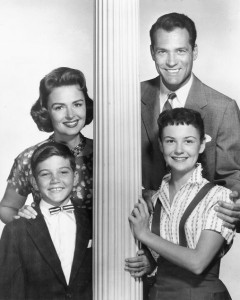One day in the agora, tradition has it, Diogenes passed a group of spiffily dressed Athenians and dismissed their finery as “mere affectation.” A little later, a group of Spartans wearing homespun and noble, haunted expressions impressed him no better. “More affectation,” he said, and stomped on home to his jug.
I think of this story whenever I read about some unexpected display of humility on Pope Francis’ part. Don’t get me wrong — I’m not calling the pope a fake. But he must know that when a man of his dignity acts like just plain folks by paying his own bills, cancelling his own newspaper subscriptions and dental appointments, or tsk-tsking over the excessive floor space in his new apartment, the world’s bound to notice. Spectacle is a big part of the papal office, and everything an occupant says, does, or — maybe especially — wears is co-opted into that spectacle. Francis’ papal persona, then, is anti-spectacular to a spectacular degree.
All this by way of offering reassurance to Louie Verrecchio. In Catholic Exchange, Verrecchio proves he understands spectacle very well, especially when it comes to Francis’ liturgical tastes. In his worst nightmares, “small gestures” like the scorning of the mozzetta and the stripping-down of the blessing will do nothing but give aid and comfort to “clapping liturgical lunatics who despise tradition and can barely contain themselves in giddy anticipation of what this papacy might hold for the future of their cause.”
These worries aren’t totally baseless. Something about Pope Francis encouraged Conrad Black to urge him to lift the church’s ban on artificial birth control. This in the National Review. (If Buckley’s not spinning in his grave, Bozell must be doing a danza Mora in his.) But closer observers are less happy-clappy over the possibility of doctrinal revision. John Allen, Jr. warns Francis won’t likely carry his previous (and apparently reluctant) support for same-sex civil unions into his pontificate. This in National Catholic Reporter.
In any case, Francis has gone on record denouncing “the spiritual poverty of our time,” which he defines as “the tyranny of relativism.” That’s Benedict’s line, and Francis gave his predecessor full credit. If there’s a nicer way of telling would-be reformers, “Ha-ha, no hermeneutic of rupture for you,” I can’t imagine what it might be.
To Verrecchio’s way of thinking, papal pomp has another, more practical use. The triregnum, sedia gestatoria, and ostrich-plume fans, he says, rank “among our most effective tools for the work of evangelization.” I’d love to see the numbers behind that claim, but in their absence, I can cite at least one recent anecdote to the contrary. The day of Francis’ election, Rabia Chaudry, a friend of mine who writes for AltMuslim, remarked on Facebook that Francis’ folksy style seemed to mirror what she understood to be Jesus’ own. The next day, when I posted an article about the new pope’s first 24 hours, she gushed, “May God preserve him in all his ways!”
Now, I’m not holding my breath for Rabia to swim the Tiber, but if she did — wow. Could you imagine a better ally in a modesty debate?
We can argue whether evangelizing in the rough is seemly, but it’s hard to deny that it works. In When We Were Kings, Leon Gast’s documentary on the 1974 Foreman-Ali fight, a Kinshasa resident admits frankly that he and his countrymen favored the aging Ali over the apparently invincible Foreman. Part of the reason was Ali’s frantic affability. The challenger invited small mobs of locals to his sparring sessions, visited Kinshasa’s slums — in short, did the whole baby-kissing routine. Though Foreman “seemed more black,” as Norman Mailer gracelessly put it in The Fight, his reserve made him the outsider. The champ hurt his cause further by keeping a German shepherd, a favorite of the Belgian colonial police, as his own Noble Guard.
It works because it shows confidence — in the the mob and the message. If the one rebuffs, the other will endure. Pope-Emeritus Benedict has been widely acclaimed as the best-dressed pontiff in recent memory. (Charlotte Allen calls him “the Duke of Windsor of popes,” proving that even when the media want to be nice to him, they reach for a Nazi metaphor.) As a hands-on evangelist he proved himself no slouch, making numerous trips despite his advanced age, and subjecting himself to plenty of inane photo ops. But his discomfort was plainly visible, and I have always wondered whether his dandyism wasn’t a form of compensation for his shyness, that is, whether he chose clothes he hoped would make his impression for him.
Of course, it’s possible to radiate confidence and good cheer in the fullest papal regalia. No pope has ever had more popular appeal than John XXIII, who did wear the triple tiara, and who — though not exactly waifish — permitted himself to be borne in the portable throne. But he was a pope for his time, and Francis is a pope for his. In Francis’ view, finery tends to confuse the message that the Church is for the poor, and ceremony the truth that it’s willing to be jostled in the street. Whether he’s right or wrong, he’s definitely stripping critics of their cover. With no “carnival” — to borrow a term that Francis may or may not have uttered — for a stalking horse, whoever disputes Church teachings will have no choice but to argue strictly from the merits of their positions.
Verrecchio observes that “the ornate vestments and the vast assortment of liturgical finery…has never been the property of Benedict XVI or any other pope.” He’s right, and that ought to ease his fears. Papal haute couture in general, along with the grand manner, doesn’t belong to Francis, either, and he’s shown no sign of wanting to throw either away permanently. It looks more like he’s putting them all in safekeeping for a while, maybe until more of the world’s ready for them.











